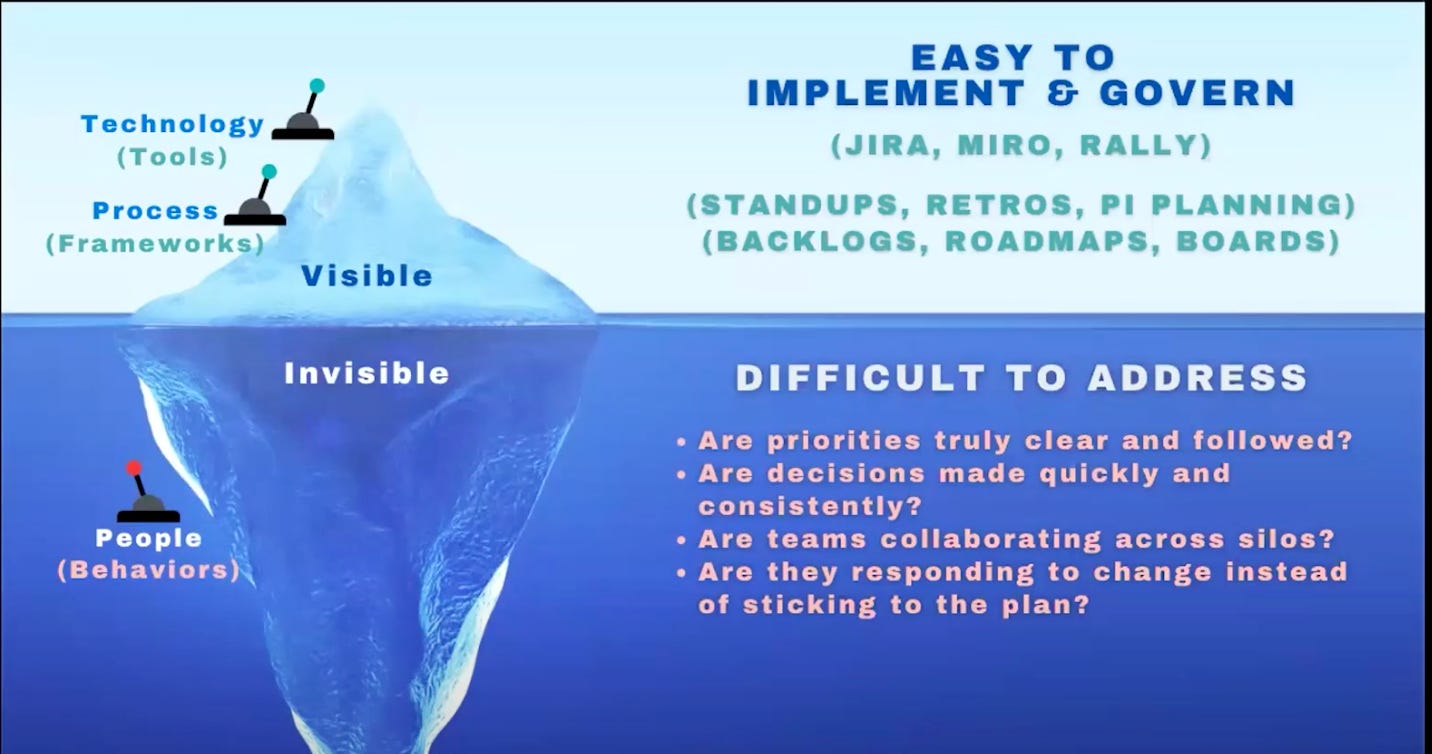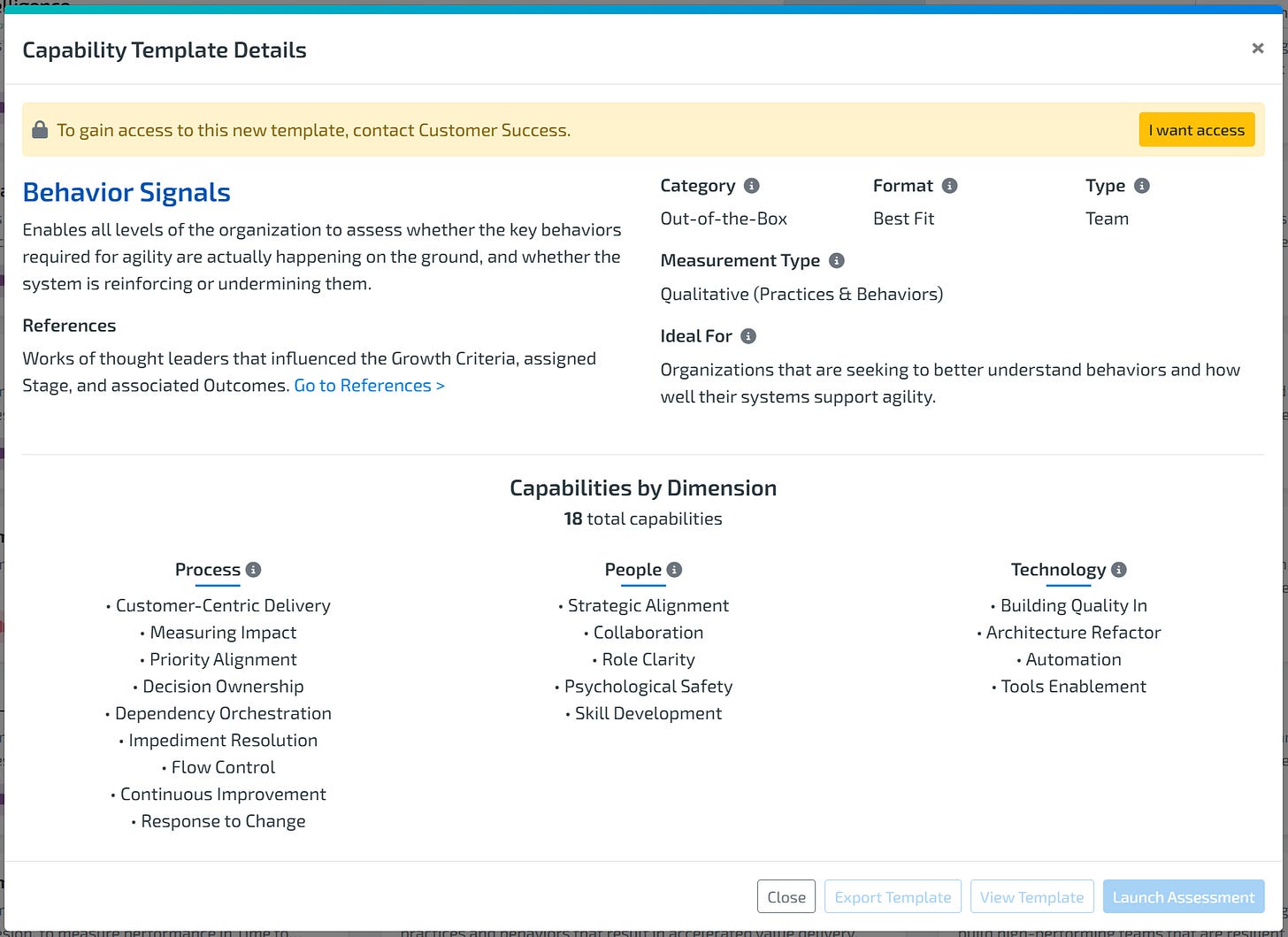Lean Agile Intelligence
Empowering Behavior-driven Leadership & Coaching
In the Spring of 2018, I wrote a piece recommending the assessment platform Lean Agile Intelligence. Believe it or not, that was over seven years ago.
In the interim, Michael McCalla and team have continued to develop LAI into a competitive force in the industry.
Along the way, I helped Michael implement a Product Owner assessment and advise him on developing an Agile Coaching assessment aligned with the Agile Coaching Growth Wheel.
So, to say that I’m a fan of LAI and Michael’s work is an understatement.
But
That said, I have a Yin/Yang relationship with all the assessment products. I guess it boils down to the risk of weaponizing the data and the act of measuring changing things (observer effect). But that’s just my fear. It has nothing to do with the products themselves.
Good News
I recently became aware of a new assessment LAI has implemented, a different assessment. One focused on observing and making visible the behaviors within the organization. It’s called the LAI – Behaviors Signals Assessment’s currently in Beta.
It seeks to expose and explore the below-the-line behaviors that are so often invisible in today’s organizations, as seen in the iceberg above.
I got very excited when Michael explained what he was working on. I’ve been harping on the importance of real agile behaviors over process, frameworks, and tools for a very long time. That only when behaviors change at the—
1. Individual
2. Team
3. Management
4. Organizational
5. Leadership
levels do you, or will you, see real transformational change. It’s these behavior shifts that make Agile Transformations sticky and resilient.
The LAI Behavioral assessment primarily operates at the first two levels—individual and team—and provides behavioral signals about organizational leadership.
This version of the assessment captures eighteen signals or capabilities, grouped into Process, People, and Technology areas.
While all the capabilities are relevant, I’m particularly attracted to the People group of capabilities.
From a Team perspective, you’ll receive signals on—
Strategic Alignment – How strongly are the dots connected between top-level strategy and bottom-level team execution?
Psychological Safety – How safe do individuals feel within the organizational culture?
Skill Development – How well are we training and mentoring our team members?
And, from an individual perspective, signals on—
Collaboration – How well do members collaborate within their teams?
Role Clarity: How well do I understand my role, its expectations, and how it interacts with other roles?
I’ll leave the exploration of the other capabilities to your research.
Note: I love the use of the term signals with the assessment. It has a leading indicator essence for me and alludes to an early warning that I, as a leader and/or coach, can adjust with or to. It just resonates with me.
My Take
From my perspective, the assessment is a fantastic first step into the world of behavioral transparency. It provides real transformation impact insights and inspiration for guiding improvement. I don’t believe any other assessments have taken this novel approach.
That said, I think the assessment is too focused on teams and tactical execution. I’d love to see an equivalent assessment that captures leadership signals to help guide the development of organizational leaders.
To me, that would connect the dots across all five levels I highlighted above.
I want to congratulate Michael and his team on this innovation. Since it’s in Beta, I hope it does well and gains general adoption, which I believe it strongly deserves.
Stay agile, my friends,
Bob.
Find more information on the LAI Behaviors Signals Assessment.




